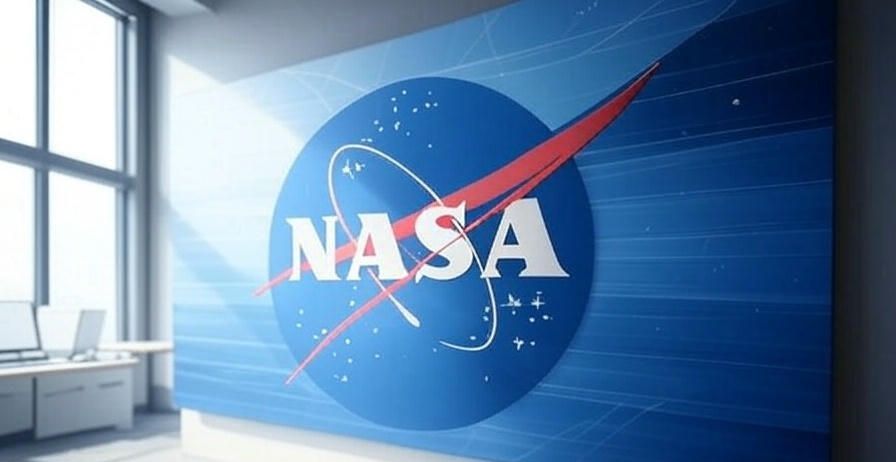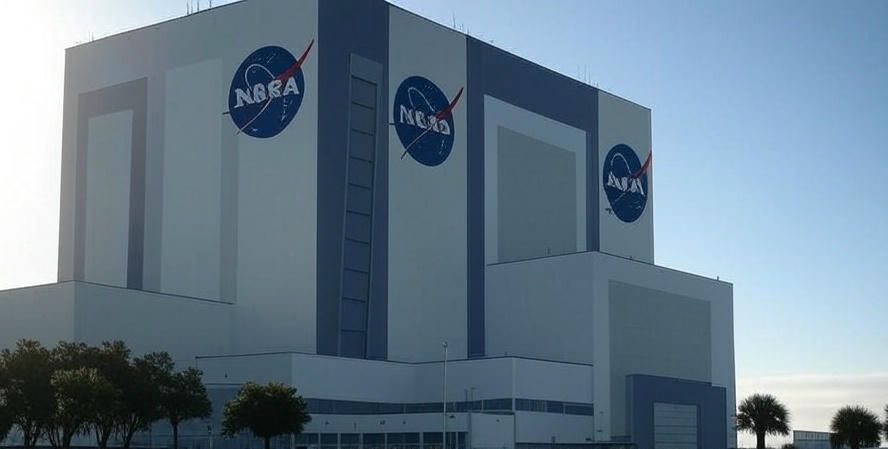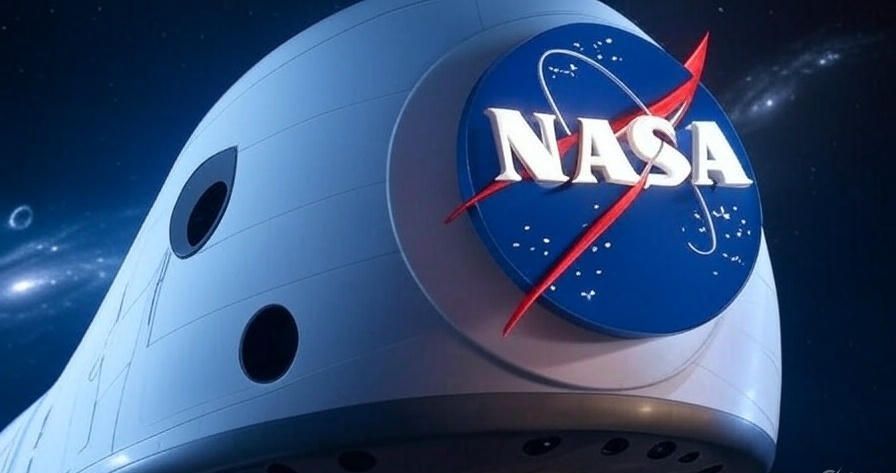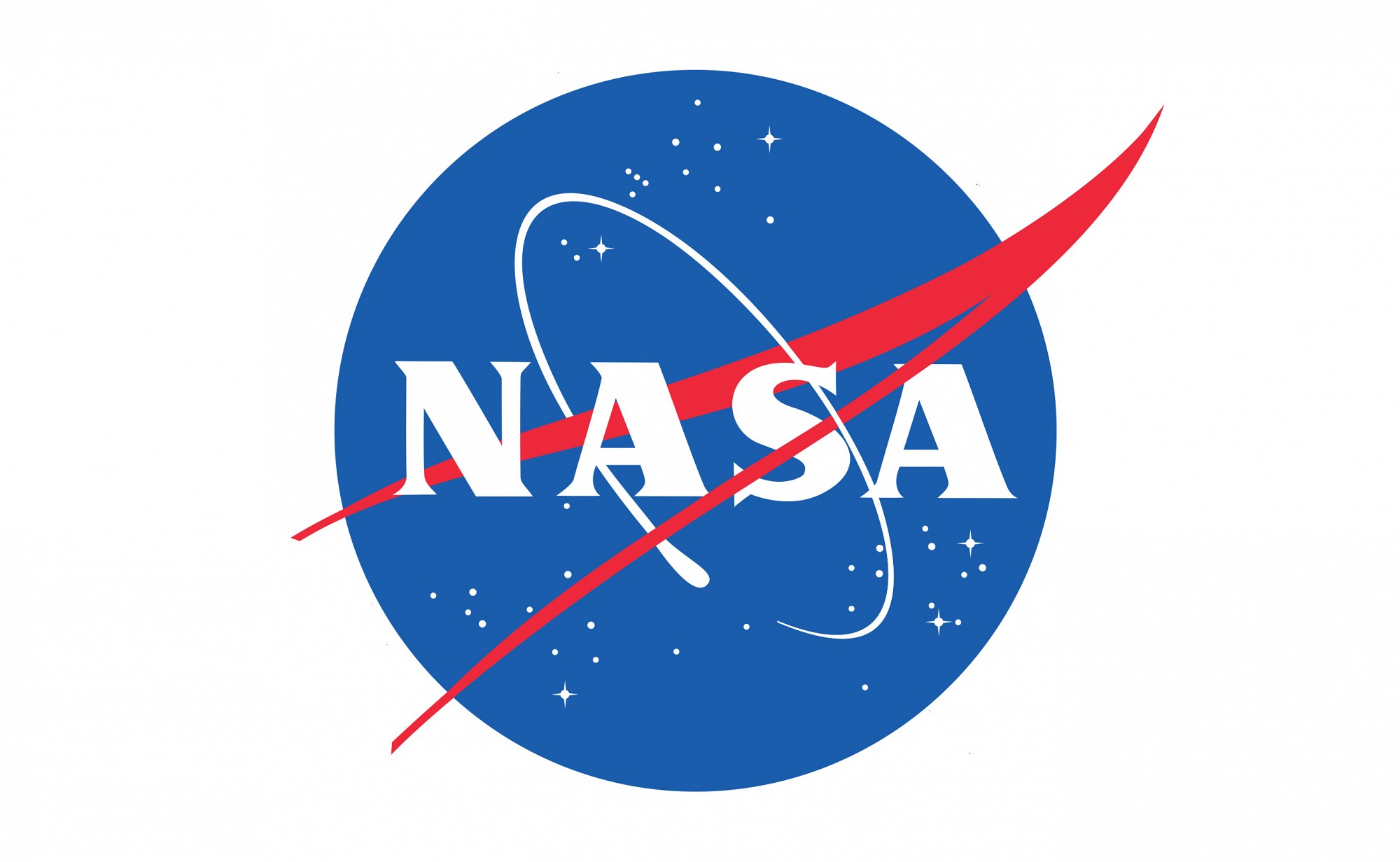The National Aeronautics and Space Administration, or NASA, is a name that sparks wonder and curiosity in people of all ages. From landing humans on the Moon to exploring distant planets and studying the stars, NASA has been at the forefront of space exploration and scientific discovery for over six decades. In this detailed 3,000-word blog article, we’ll take a simple, engaging journey through NASA’s history, missions, achievements, challenges, recent updates, and its vision for the future. Whether you’re a space enthusiast, a student, or just curious about the universe, this article is for you!

𝗪𝗵𝗮𝘁 𝗶𝘀 𝗡𝗔𝗦𝗔? 𝗔 𝗕𝗿𝗶𝗲𝗳 𝗜𝗻𝘁𝗿𝗼𝗱𝘂𝗰𝘁𝗶𝗼𝗻
NASA, which stands for the National Aeronautics and Space Administration, is an independent agency of the U.S. federal government. It was created on July 29, 1958, by President Dwight D. Eisenhower, replacing the National Advisory Committee for Aeronautics (NACA). NASA’s main job is to lead America’s civilian space program, conduct research in aeronautics (the science of flight), and explore space for peaceful purposes. Unlike military-focused space efforts, NASA emphasizes science, discovery, and international collaboration.
Headquartered in Washington, D.C., NASA has 10 major centers across the U.S., including the Kennedy Space Center in Florida, the Jet Propulsion Laboratory (JPL) in California, and the Johnson Space Center in Texas. With a workforce of over 18,000 people and an annual budget of about $25 billion in recent years, NASA works to uncover the mysteries of space, search for life beyond Earth, and improve life on our planet.
NASA’s mission is to “drive advances in science, technology, aeronautics, and space exploration to enhance knowledge, education, innovation, economic vitality, and stewardship of Earth.” Simply put, NASA wants to explore the unknown, inspire people, and protect our planet.

𝗡𝗔𝗦𝗔’𝘀 𝗛𝗶𝘀𝘁𝗼𝗿𝘆: 𝗙𝗿𝗼𝗺 𝘁𝗵𝗲 𝗦𝗽𝗮𝗰𝗲 𝗥𝗮𝗰𝗲 𝘁𝗼 𝗧𝗼𝗱𝗮𝘆
𝙏𝙝𝙚 𝙀𝙖𝙧𝙡𝙮 𝘿𝙖𝙮𝙨 𝙖𝙣𝙙 𝙩𝙝𝙚 𝙎𝙥𝙖𝙘𝙚 𝙍𝙖𝙘𝙚
NASA’s story begins during a time of intense competition between the United States and the Soviet Union, known as the Cold War. In 1957, the Soviet Union launched Sputnik, the first artificial satellite to orbit Earth. This event shocked the U.S. and sparked the “Space Race,” a competition to achieve space milestones and prove technological superiority.
In response, the U.S. created NASA in 1958. One of NASA’s first big projects was Project Mercury (1959–1963), which aimed to send an American astronaut into space. On May 5, 1961, astronaut Alan Shepard became the first American in space, followed by John Glenn, who orbited Earth in 1962.
𝙏𝙝𝙚 𝘼𝙥𝙤𝙡𝙡𝙤 𝙋𝙧𝙤𝙜𝙧𝙖𝙢: 𝙇𝙖𝙣𝙙𝙞𝙣𝙜 𝙤𝙣 𝙩𝙝𝙚 𝙈𝙤𝙤𝙣
NASA’s most iconic achievement came with the Apollo program (1961–1972). On May 25, 1961, President John F. Kennedy gave a bold challenge: land a man on the Moon and bring him back safely by the end of the decade. This goal seemed nearly impossible at the time, but NASA made it happen.
On July 20, 1969, Apollo 11 achieved this dream. Astronauts Neil Armstrong, Buzz Aldrin, and Michael Collins traveled to the Moon. Armstrong became the first human to step on the lunar surface, famously saying, “That’s one small step for man, one giant leap for mankind.” Aldrin joined him on the surface, while Collins orbited above in the command module. NASA conducted six lunar landings in total, with Apollo 17 in 1972 being the last.
𝙎𝙠𝙮𝙡𝙖𝙗 𝙖𝙣𝙙 𝙩𝙝𝙚 𝙎𝙥𝙖𝙘𝙚 𝙎𝙝𝙪𝙩𝙩𝙡𝙚 𝙀𝙧𝙖
After Apollo, NASA shifted focus to building a space station and reusable spacecraft. In 1973, NASA launched Skylab, America’s first space station, using leftover Apollo hardware. Skylab allowed astronauts to live and work in space for extended periods, conducting experiments in microgravity.
In 1981, NASA introduced the Space Shuttle program, a reusable spacecraft that could launch like a rocket and land like an airplane. The shuttle made spaceflight more routine, launching satellites, conducting experiments, and helping build the International Space Station (ISS). However, the program faced tragedies, including the Challenger explosion in 1986 and the Columbia disaster in 2003, which killed 14 astronauts. The Space Shuttle program ended in 2011 after 135 missions.
𝙏𝙝𝙚 𝙄𝙣𝙩𝙚𝙧𝙣𝙖𝙩𝙞𝙤𝙣𝙖𝙡 𝙎𝙥𝙖𝙘𝙚 𝙎𝙩𝙖𝙩𝙞𝙤𝙣 𝙖𝙣𝙙 𝘽𝙚𝙮𝙤𝙣𝙙
Since 2000, NASA has been a key partner in the International Space Station (ISS), a massive orbiting laboratory built with help from Russia, Europe, Japan, and Canada. The ISS is a symbol of global cooperation, hosting astronauts from around the world to conduct experiments in science, biology, and technology. NASA’s involvement in the ISS has led to breakthroughs in medicine, materials science, and our understanding of how humans can live in space long-term.
Today, NASA continues to push boundaries with programs like Artemis, which aims to return humans to the Moon, and missions to explore Mars and beyond.

𝗡𝗔𝗦𝗔’𝘀 𝗠𝗮𝗷𝗼𝗿 𝗠𝗶𝘀𝘀𝗶𝗼𝗻𝘀: 𝗘𝘅𝗽𝗹𝗼𝗿𝗶𝗻𝗴 𝗦𝗽𝗮𝗰𝗲 𝗮𝗻𝗱 𝗘𝗮𝗿𝘁𝗵
NASA’s missions are divided into several categories: human spaceflight, robotic exploration, Earth science, and astrophysics. Let’s explore some of the most significant ones.
𝙃𝙪𝙢𝙖𝙣 𝙎𝙥𝙖𝙘𝙚𝙛𝙡𝙞𝙜𝙝𝙩
✓ Artemis Program: Launched in 2017, Artemis aims to return humans to the Moon by 2026 and establish a sustainable presence there. The program uses the Space Launch System (SLS) rocket and the Orion spacecraft. Artemis I, an uncrewed test flight, launched successfully in November 2022. Artemis II, set for late 2025, will send astronauts on a lunar flyby, and Artemis III will attempt a lunar landing. NASA plans to use the Moon as a stepping stone for future Mars missions.
✓ Commercial Crew Program: Since the Space Shuttle retired, NASA has relied on private companies like SpaceX and Boeing to ferry astronauts to the ISS. SpaceX’s Crew Dragon has been a success, with its first crewed mission in 2020. This program has reduced NASA’s dependence on Russian Soyuz spacecraft.
𝙍𝙤𝙗𝙤𝙩𝙞𝙘 𝙀𝙭𝙥𝙡𝙤𝙧𝙖𝙩𝙞𝙤𝙣
✓ Mars Exploration: NASA has sent multiple rovers to Mars, including Sojourner (1997), Spirit and Opportunity (2004), Curiosity (2012), and Perseverance (2021). Perseverance is searching for signs of ancient life and collecting samples for a future return to Earth. Its companion, the Ingenuity helicopter, made history in 2021 as the first aircraft to fly on another planet.
✓ Voyager Program: Launched in 1977, the Voyager 1 and Voyager 2 spacecraft have explored the outer planets (Jupiter, Saturn, Uranus, and Neptune) and are now in interstellar space, sending data back to Earth after nearly 50 years.
✓ James Webb Space Telescope (JWST): Launched in December 2021, the JWST is the most powerful telescope ever built. It has captured stunning images of distant galaxies, stars, and exoplanets, helping scientists study the early universe and search for signs of life.
𝙀𝙖𝙧𝙩𝙝 𝙎𝙘𝙞𝙚𝙣𝙘𝙚
NASA doesn’t just look outward—it also studies Earth. Satellites like Landsat and Aqua monitor climate change, weather patterns, and natural disasters. NASA’s Earth science division works to understand our planet’s changing environment and protect life here.
𝘼𝙨𝙩𝙧𝙤𝙥𝙝𝙮𝙨𝙞𝙘𝙨
NASA’s astrophysics missions, like the Hubble Space Telescope (launched in 1990), have revolutionized our understanding of the universe. Hubble has captured iconic images, such as the Pillars of Creation, and helped scientists calculate the universe’s age (about 13.8 billion years). The JWST is now taking this work further.

𝗥𝗲𝗰𝗲𝗻𝘁 𝗨𝗽𝗱𝗮𝘁𝗲𝘀: 𝗪𝗵𝗮𝘁’𝘀 𝗛𝗮𝗽𝗽𝗲𝗻𝗶𝗻𝗴 𝗮𝘁 𝗡𝗔𝗦𝗔 𝗶𝗻 𝟮𝟬𝟮𝟱?
As of June 2025, NASA is buzzing with activity. Here are some recent highlights:
✓ Artemis Program Progress: NASA is preparing for Artemis II, a crewed mission that will fly astronauts around the Moon. Originally planned for 2024, delays have pushed the launch to late 2025 due to technical challenges with the SLS rocket and Orion spacecraft. The mission will be a key step toward landing astronauts on the lunar South Pole with Artemis III.
✓ Mars Sample Return: NASA’s Perseverance rover continues to collect samples on Mars. On June 4, 2025, NASA reported that the rover is searching for a suitable location to drill a new sample in the Jezero Crater, a site believed to hold clues to ancient Martian life. The Mars Sample Return mission, a collaboration with the European Space Agency (ESA), aims to bring these samples back to Earth by the early 2030s.
✓ International Space Station Research: The ISS remains a hub for scientific discovery. In 2024, NASA reported that 59% of the nearly 4,000 investigations conducted on the ISS are complete. About 16% of ISS research results have been published in top-tier journals, with a significant increase in publications since 2018, especially in Earth and space science.
✓ James Webb Space Telescope Discoveries: In 2025, the JWST has continued to amaze scientists with new findings. It recently captured images of a distant exoplanet with potential signs of water vapor, fueling excitement about the search for life beyond Earth
𝗡𝗔𝗦𝗔’𝘀 𝗔𝗰𝗵𝗶𝗲𝘃𝗲𝗺𝗲𝗻𝘁𝘀: 𝗖𝗵𝗮𝗻𝗴𝗶𝗻𝗴 𝘁𝗵𝗲 𝗪𝗼𝗿𝗹𝗱
NASA’s work has had a profound impact on science, technology, and society. Here are some of its biggest achievements:
𝙎𝙥𝙖𝙘𝙚 𝙀𝙭𝙥𝙡𝙤𝙧𝙖𝙩𝙞𝙤𝙣 𝙈𝙞𝙡𝙚𝙨𝙩𝙤𝙣𝙚𝙨
✓ Moon Landing: The Apollo 11 mission in 1969 was a defining moment in human history, proving that humans could travel to and explore another celestial body.
✓ Mars Rovers: NASA’s rovers have transformed our understanding of Mars, finding evidence of ancient water and conditions that might have supported microbial life.
✓ Interstellar Exploration: The Voyager spacecraft are the farthest human-made objects from Earth, carrying a “Golden Record” with sounds and images representing humanity.
𝙏𝙚𝙘𝙝𝙣𝙤𝙡𝙤𝙜𝙞𝙘𝙖𝙡 𝙄𝙣𝙣𝙤𝙫𝙖𝙩𝙞𝙤𝙣𝙨
NASA’s research has led to technologies we use every day:
✓ Memory Foam: Developed for astronaut seats, memory foam is now in mattresses and pillows.
✓ Water Purification: NASA’s water filtration systems for space are used to provide clean water in remote areas on Earth.
✓ GPS and Weather Satellites: NASA’s work on satellites has improved navigation and weather forecasting.
𝙄𝙣𝙨𝙥𝙞𝙧𝙞𝙣𝙜 𝙂𝙚𝙣𝙚𝙧𝙖𝙩𝙞𝙤𝙣𝙨
NASA’s missions have inspired countless people to pursue careers in science, technology, engineering, and math (STEM). Programs like the Artemis Student Challenges engage young people in space exploration, ensuring the next generation of innovators.
𝗖𝗵𝗮𝗹𝗹𝗲𝗻𝗴𝗲𝘀 𝗡𝗔𝗦𝗔 𝗙𝗮𝗰𝗲𝘀
Despite its successes, NASA faces several challenges:
𝙁𝙪𝙣𝙙𝙞𝙣𝙜 𝙖𝙣𝙙 𝘽𝙪𝙙𝙜𝙚𝙩
NASA’s budget is a small fraction of the U.S. federal budget (about 0.5%). Competing priorities, like defense and healthcare, often limit funding for space exploration. This affects the timeline and scope of missions like Artemis and Mars Sample Return.NASA’s budget is a small fraction of the U.S. federal budget (about 0.5%). Competing priorities, like defense and healthcare, often limit funding for space exploration. This affects the timeline and scope of missions like Artemis and Mars Sample Return.
𝙏𝙚𝙘𝙝𝙣𝙞𝙘𝙖𝙡 𝘿𝙞𝙛𝙛𝙞𝙘𝙪𝙡𝙩𝙞𝙚𝙨
Space exploration is incredibly complex. Delays in the Artemis program, for example, stem from issues with the SLS rocket and Orion spacecraft. Ensuring astronaut safety and mission success requires rigorous testing, which takes time.
𝙄𝙣𝙩𝙚𝙧𝙣𝙖𝙩𝙞𝙤𝙣𝙖𝙡 𝘾𝙤𝙢𝙥𝙚𝙩𝙞𝙩i𝙤𝙣
Countries like China and India are advancing their space programs. China’s lunar missions and plans for a Mars base have intensified global competition. NASA must balance collaboration (like with the ISS) and competition to maintain its leadership.
𝙀𝙩𝙝𝙞𝙘𝙖𝙡 𝙖𝙣𝙙 𝙀𝙣𝙫𝙞𝙧𝙤𝙣𝙢𝙚𝙣𝙩𝙖𝙡 𝘾𝙤𝙣𝙘𝙚𝙧𝙣𝙨
Some critics question the cost of space exploration when Earth faces pressing issues like climate change. Others worry about space debris and the environmental impact of rocket launches. NASA is working to address these concerns by developing sustainable technologies and cleaning up space debris.
𝗡𝗔𝗦𝗔’𝘀 𝗙𝘂𝘁𝘂𝗿𝗲: 𝗪𝗵𝗮𝘁’𝘀 𝗡𝗲𝘅𝘁?𝗡𝗔𝗦𝗔 𝗵𝗮𝘀 𝗯𝗶𝗴 𝗽𝗹𝗮𝗻𝘀 𝗳𝗼𝗿 𝘁𝗵𝗲 𝗰𝗼𝗺𝗶𝗻𝗴
NASA has big plans for the coming decades:
𝙍𝙚𝙩𝙪𝙧𝙣𝙞𝙣𝙜 𝙩𝙤 𝙩𝙝𝙚 𝙈𝙤𝙤𝙣 𝙬𝙞𝙩𝙝 𝘼𝙧𝙩𝙚𝙢𝙞𝙨
The Artemis program aims to establish a lunar base, called the Gateway, in lunar orbit. This will serve as a hub for lunar exploration and a stepping stone for Mars missions. NASA plans to send the first woman and the first person of color to the Moon, promoting diversity in space exploration.
𝙀𝙭𝙥𝙡𝙤𝙧𝙞𝙣𝙜 𝙈𝙖𝙧𝙨
NASA’s ultimate goal is to send humans to Mars in the 2030s. The agency is developing technologies to make this possible, including advanced life support systems and habitats. The Mars Sample Return mission will provide critical data about the Red Planet’s environment.
𝙎𝙚𝙖𝙧𝙘𝙝𝙞𝙣𝙜 𝙛𝙤𝙧 𝙇𝙞𝙛𝙚
Missions like the Europa Clipper (set to launch in 2024) will explore Jupiter’s moon Europa, which may have a subsurface ocean capable of supporting life. The JWST and future telescopes will continue searching for habitable exoplanets.
𝘼𝙙𝙫𝙖𝙣𝙘𝙞𝙣𝙜 𝙎𝙘𝙞𝙚𝙣𝙘𝙚 𝙤𝙣 𝙀𝙖𝙧𝙩𝙝
NASA’s Earth science missions will focus on climate change, using satellites to monitor rising sea levels, melting ice caps, and extreme weather. The agency is also investing in sustainable aviation technologies to reduce the environmental impact of air travel.
𝗛𝗼𝘄 𝗡𝗔𝗦𝗔 𝗜𝗻𝘀𝗽𝗶𝗿𝗲𝘀 𝗮𝗻𝗱 𝗘𝗻𝗴𝗮𝗴𝗲𝘀 𝘁𝗵𝗲 𝗣𝘂𝗯𝗹𝗶𝗰
NASA isn’t just for scientists—it’s for everyone. The agency works hard to engage the public and share its discoveries:
✓ Education Programs: NASA offers resources for students and teachers, including STEM activities, virtual tours, and internships. The NASA STEM Engagement program reaches millions of students each year.
✓ Social Media and Outreach: NASA has a huge online presence, with millions of followers on platforms like Instagram, Twitter, and YouTube. The agency shares stunning images, live streams of launches, and updates on missions.
✓ Citizen Science: Programs like GLOBE allow people to contribute to NASA’s research by collecting data on weather, clouds, and the environment.
NASA also inspires through its astronauts. Figures like Neil Armstrong, Sally Ride (the first American woman in space), and Mae Jemison (the first Black woman in space) have become role models for generations.
𝗙𝘂𝗻 𝗙𝗮𝗰𝘁𝘀 𝗔𝗯𝗼𝘂𝘁 𝗡𝗔𝗦𝗔
✓ NASA’s Kennedy Space Center has a runway that’s 15,000 feet long—twice the length of most commercial runways!
✓ The Voyager Golden Record contains sounds like music, laughter, and greetings in 55 languages, meant to represent humanity to any extraterrestrial life that might find it.
✓ NASA’s X-43A is the fastest aircraft ever, reaching speeds of Mach 9.6 (over 7,144 mph) in 2004.
✓ The Hubble Space Telescope has taken over 1.5 million observations since its launch, contributing to more than 18,000 scientific papers
𝗖𝗼𝗻𝗰𝗹𝘂𝘀𝗶𝗼𝗻: 𝗡𝗔𝗦𝗔’𝘀 𝗟𝗲𝗴𝗮𝗰𝘆 𝗮𝗻𝗱 𝗩𝗶𝘀𝗶𝗼𝗻
NASA’s journey from the Space Race to the present day is a testament to human curiosity, innovation, and perseverance. The agency has taken us to the Moon, explored distant planets, and deepened our understanding of the universe—all while inspiring people around the world to dream big. Despite challenges like funding and technical hurdles, NASA continues to push the boundaries of what’s possible.
As we look to the future, NASA’s plans for the Moon, Mars, and beyond promise to unlock new frontiers in science and exploration. Whether you’re a kid gazing at the stars, a scientist studying the cosmos, or just someone who loves a good adventure, NASA’s story reminds us that the universe is full of wonders waiting to be discovered. So, let’s keep looking up, dreaming, and exploring—because with NASA, the sky is just the beginning.

